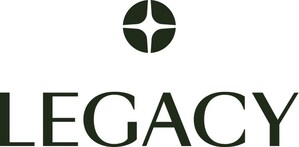An "R" Rating for Movies with Smoking Would Significantly Reduce Youth Smoking Initiation, Saving Lives and Money
WASHINGTON, July 9, 2012 /PRNewswire-USNewswire/ -- Movies are just as powerful as traditional tobacco ads, and it is a known fact – supported by the U.S. Centers for Disease Control and Prevention, as well as the U.S. Surgeon General – that smoking in movies can cause youth to smoke, nearly 180,000 adolescents each year. A new study published today in the journal Pediatrics takes a deeper look at movie smoking exposure and the impact of different ratings on smoking onset. The results show that smoking in PG-13 and R movies are equivalent in terms of how they increase risk for smoking. But, because youth viewership of PG-13 movies is higher, smoking in PG-13 films accounts for two thirds of the total movie effect on adolescent smoking.
(Logo: http://photos.prnewswire.com/prnh/20101101/DC86294LOGO)
"PG-13 rated movies account for the most of the salient movie smoking adolescents see," said Dr. James Sargent, Professor of Pediatrics at Dartmouth Medical School and lead author of the study. "By eliminating smoking from PG-13 movies, an R-rating for movie smoking would cut youth smoking by one-fifth," he said.
For this reason, national public health groups like Legacy, American Academy of Pediatrics, American Heart Association, American Lung Association and more have strongly urged the movie industry to respond to this public health crisis by assigning an R rating to all movies with smoking. Since a PG-13 rating allows filmmakers to draw larger audiences, the R rating might in turn decrease the prevalence of onscreen smoking in youth-rated films.
In 2007, under public pressure from health groups and state attorneys general, the Motion Picture Association of America (MPAA) announced that it would "consider" smoking in assigning ratings but it has yet to rate a film R for smoking. The MPAA's current rating system inconsistently includes smoking in its fine-print ratings "descriptors," which has been ineffective in providing consistent, accurate or complete information about tobacco in youth-rated films. Simply labeling the smoking is an ineffective and incomplete step in reducing the impact and dangerous correlation of youth exposure and initiation.
Funded by the National Cancer Institute and Legacy®, a national public health organization best known for the truth® youth smoking prevention campaign, the data supports eliminating smoking from PG-13 movies, which would significantly reduce smoking onset by 18 percent. "This new research shows us that ratings do matter," said Cheryl G. Healton, DrPH, President and CEO of Legacy. "Updating the rating system to assign an R rating for movies with smoking would have an enormous impact in preventing young people from becoming the next replacement smokers in the tobacco epidemic," she added.
Examining how movie ratings affect behavior has important implications, such as whether the context in which movie smoking is presented affects smoking. In a different study, exposure to movie clips portraying smoking as relaxing was significantly associated with a stronger desire to smoke compared with clips where the motive for smoking was unclear.
To investigate whether it was other elements of the films than the smoking that was stimulating youth smoking, the Dartmouth researchers used the ratings system as a marker for contextual elements on which movies are rated: sexual content, profanity, drug use and violence. The researchers found that smoking in PG-13 movies had essentially the same impact on smoking initiation as R-rated movies, indicating that it is the smoking – not other behaviors – that primarily impacts adolescent behavior.
"This study demonstrates that it is not some unmeasured characteristic of adolescents drawn to edgy, R-rated movies that accounts for the movie effect on behavior. The simplest explanation is best; kids see realistic depictions of smoking on screen and that makes them want to light up," said Dr. Sargent.
Legacy helps people live longer, healthier lives by building a world where young people reject tobacco and anyone can quit. Legacy's proven-effective and nationally recognized public education programs include truth®, the national youth smoking prevention campaign that has been cited as contributing to significant declines in youth smoking; EX®, an innovative public health program designed to speak to smokers in their own language and change the way they approach quitting; and research initiatives exploring the causes, consequences and approaches to reducing tobacco use. Located in Washington, D.C., the foundation was created as a result of the November 1998 Master Settlement Agreement (MSA) reached between attorneys general from 46 states, five U.S. territories and the tobacco industry. To learn more about Legacy's life-saving programs, visit www.LegacyForHealth.org.
Follow us on Twitter @legacyforhealth and Facebook www.Facebook.com/Legacy.
SOURCE Legacy
WANT YOUR COMPANY'S NEWS FEATURED ON PRNEWSWIRE.COM?
Newsrooms &
Influencers
Digital Media
Outlets
Journalists
Opted In





Share this article